The Pipes Magazine Radio Show – Episode 115
- Homepage
- Radio Talk Show
- The Pipes Magazine Radio Show – Episode 115
-
 Kevin Godbee
Kevin Godbee - Nov 25, 2014
- 1 min read
Kevin Godbee
 Thank you for joining us for The Pipes Magazine Radio Show—the only radio talk show for pipe smokers and collectors. We broadcast weekly, every Tuesday at 8 pm eastern USA time and are available on nearly all podcast sites and apps. Listen on your computer, tablet, phone and even in the car! Our Featured Interview tonight is with Pipe Maker Jonathan Lavezzo. Jonathan has taken his experiences as a pipe smoker, woodworker, and cabinet maker to be able to offer some of the most reasonably priced handmade pipes one can buy. In “Pipe Parts”, Brian will talk about how to date a Dunhill pipe … and not in a romantic way. Sit back, relax with your pipe, and enjoy The Pipes Magazine Radio Show!
Thank you for joining us for The Pipes Magazine Radio Show—the only radio talk show for pipe smokers and collectors. We broadcast weekly, every Tuesday at 8 pm eastern USA time and are available on nearly all podcast sites and apps. Listen on your computer, tablet, phone and even in the car! Our Featured Interview tonight is with Pipe Maker Jonathan Lavezzo. Jonathan has taken his experiences as a pipe smoker, woodworker, and cabinet maker to be able to offer some of the most reasonably priced handmade pipes one can buy. In “Pipe Parts”, Brian will talk about how to date a Dunhill pipe … and not in a romantic way. Sit back, relax with your pipe, and enjoy The Pipes Magazine Radio Show!
Tonight’s show is sponsored by Sutliff-Tobacco.com, CupOJoes.com, SmokingPipes.com, Missouri Meerschaum, 4noggins.com, MeerschaumStore.com, Cornell & Diehl, and Savinelli Pipes and Tobaccos. Please give them some consideration when making your next pipe or tobacco purchase.
We hope you enjoy our 1-hour show produced just for you—the pipe smoker and collector. The following link will launch a pop-up player. Alternatively, you can download the show in iTunes and other podcast sites and apps after the initial broadcast is complete here.

Pipe Maker Jonathan Lavezzo
MoonshinePipes.com
Moonshine Pipes Facebook
Written by Kevin Godbee
View all posts by: Kevin Godbee
More Pipes and Tobaccos Articles
10 Responses
Smokingpipes.com Updates
Watch for Updates Twice a WeekSite Sponsors
Recent Posts
Welcome to The Pipes Magazine Radio Show Episode 624. Our featured interview tonight is with Jebediah “Jebi” Green. Jebi is a 28-year old pipe smoker from Oklahoma. His interview is part of our ongoing series of pipe smokers that are under the age of 30. He works as an electrical engineer optimizing radar for airports. His path to pipe smoking went from cigarettes to vape, and then finally to pipes. Pipes changed Jeb’s reason for smoking from ingesting nicotine to relaxing and enjoying the contemplative moment. At the top of the show Brian will discuss his “EDC” or “Everyday Carry” items for pipe smoking.
Welcome to The Pipes Magazine Radio Show Episode 623. Our featured interview tonight is with pipe maker Chris Herriot. Chris lives in France, and grew up in the U.K. He started making pipes during the pandemic and posting about his progress. Chris Kelly of Eldritch Pipes noticed and offered to teach him. Later, Chris traveled to St. Claude, France where pipe maker Bruno Nuttens offered him additional training. At the top of the show we will continue with our ongoing tour of Brian’s pipe collection with four pipes from Ernie Markle.
Welcome to The Pipes Magazine Radio Show Episode 622. Our featured interview tonight is with Noah Slasinski. Noah is a 28-year old pipe smoker from Michigan. His interview is part of our ongoing series of pipe smokers that are under the age of 30. He started with a Missouri Meerschaum hard wood pipe in his late teens and then tried just about every type of tobacco smoking and vaping, but eventually came back exclusively to pipe smoking about a year and a half ago. YouTube videos and Paul’s Pipe Shop in Flint MI helped him along the way. Similar to some of our other younger pipe enthusiasts, Noah was influenced by writers and intellectuals that he appreciates, such as Carl Jung, C.S. Lewis, Tolkien, Mark Twain and more, as they were all pipe smokers. At the top of the show we will have a trip report on the NASPC show from this past weekend in Colombus from Dave Peterson.
Welcome to The Pipes Magazine Radio Show Episode 621. Our featured interview tonight is with Ben Straughan. Ben is a 25-year old pipe smoker that is part of our ongoing series of pipe smokers that are under the age of 30. He is from Ontario, Canada and works in radio broadcasting, but is transitioning to be a mobile crane operator. Ben has been smoking a pipe for two years. He was drawn to it because the stereotypical image of the calm, contemplative, gentleman pipe smoker has great appeal to him, and it is what he aspires to be like. At the top of the show we will have an Ask the Tobacco Blender segment with Jeremy Reeves. Jeremy is the Head Blender at Cornell & Diehl, which is one of the most popular boutique pipe tobacco companies in the USA.
We’re in the dog days of summer, and in the heat and humidity I find my palate tends to become as erratic as the extreme weather. To be more precise, my entire biochemistry is busily making the continual adjustments that keep this finely-tuned machine old jalopy of a body in top form hobbling along, and my taste buds are a good indicator that the system is preoccupied with regulating itself. Therefore it’s no surprise that McCranie’s Roanoke, the tobacco that I’d been favoring since the winter months and regularly returning to between other review blends, just wasn’t hitting the spot anymore. We live in fortunate times that present no shortage of novel and interesting blends to try, so some speculation toward new flavors is in order. This month’s spotlight will thus fall on a couple of summer sequels, of a sort: first, the latest installment of Per Jensen’s Pipe Force line, Episode II to be exact; second, a new incarnation of Seattle Pipe Club’s Hogshead, this time with a bourbon barrel-aged twist. Much like The Empire Strikes Back improved on the previous film in that series, Episode II is a generational improvement on the English profile offered in Episode I. To my personal taste, while I enjoyed Episode I quite a bit, it didn’t have a definable hook for me; this iteration of a similar ingredient list hits much closer to the mark. Here again it is a Latakia-forward mixture presented with Katerini concoctions and stoved tobaccos, but with more variety and, for my money, more interest. From the tin: A mellow, sweet mixture of Bright, Red, and Stoved Virginia offers the exceptional base for smokey Latakia, floral Kentucky, spice of Stoved Katerini and the ambrosial berry and spice of Katerini Perique. The result is a harmony of flavor in perfect balance. The bouquet in the tin is tart, heathery, and leathery, in equal proportion. The aroma is dry and smoky with clear clay overtones and, as advertised, faint berry notes from the tin. In the bowl the sweetness sneaks in immediately, displaying a wonderful synergy between the Katerini Perique (Periquini? Katerique?) and the Virginias, offering a flavor unique and quite apart from the usual raisiny range commonly found in Virginia / Perique meldings. Conversely, the Latakia’s smoky, burning-rubber character is also influenced by the Katerini, directing it toward a very pinyon-esque range of aroma that lingers distinctly the room note afterward. Speaking of room note, it can become rather tart after repeated bowls—advise any expected visitors that no, there isn’t a diesel fire in your house, you’re just savoring your time with a new blend. It’s offered as a tight 50g crumble cake, easily broken apart for preparation. As if it needed any more curb appeal, every 10th tin of the series includes a challenge coin featuring the tin’s artwork inside, and this was a lucky tin. It’s a great way to have fun with the series, makes a great addition to the random tchotchkes adorning one’s desk, and serves as a very tactile fidget toy that doubles as a brand reminder—is it time to stock up again? In my testing it seemed at its best in a wider, shallower bowl; the ember was easier to tend, breath pacing allowed a fuller flavor, and it didn’t veer too strongly to the tarry tones that Lat can have. Of the flavors there were many—often varying from bowl to bowl, and very dependent on accompanying beverage or previous meal, it seems. It’s an unfocused blend, but not to its detriment in this regard; it had a very consistent overall tone, with each bowl eliciting some new and interesting flavor moments—my notes are all over the spectrum, with observations like popcorn, maple bacon, charred cardboard, the aforementioned diesel fumes, burnt beef ends, dried silage, musky oak, swamp water (peaty!), and dried vodka. Appreciably, those who enjoy Latakia will read all these descriptors and understand that none of them are negative. It was so fun to keep chasing these disparate flavors that I did incur some mouth fatigue, just this side of bite, after rapidly repeated bowls. Slow smoking and pacing are advised, as the nicotine was mild enough to not discourage such practice. Overall, Episode II is a blend with so many interesting things going on that it warrants another taste after it has some age on it. My hope is that with some time in the tin, the Latakia notes will tone down on the dryness and the Viriginia / Katerique sweetness will amplify, with all the other cacophonous notes finding their home in the in-between spaces comfortably. Per’s experiments with these new treatments of old leaf are yielding remarkable results, and I look forward to seeing them in more blends in the future, and indeed more innovation of this sort in the tobacco world in general. Tasting something so similar, yet so slightly different, from what’s been available before is what this market needs. Seattle Pipe Club Hogshead: Bourbon Barrel Aged Review Our second summer blockbuster is SPC’s Hogshead: Bourbon Barrel Aged. Somewhat akin to that other summer blockbuster, Deadpool & Wolverine, this one is a cut above its predecessor. Thank you ladies and gentlemen, I’ll be here all week, tip your waitress… Vintage Virginia tobacco cultivated from around the world aged in a bourbon barrel for 30 days. The tobacco is then pressed and cut for a unique and one of a kind smoking experience. Well at least they didn’t prattle on with the ad copy and let the blend speak for itself. Veering a hard left from the boisterous melange of the Pipe Force, this iteration of Hogshead is a dead simple straight Virginia blend of the same 10-year-old red & orange used in the prior, this time presented in thickly-sliced pressed flakes, aged in bourbon barrels. Deceptively simple, that is—the flavors of this blend are robust and varied, punching above their weight class for being confined to the comparatively narrow range of “just Virginia”. The first […]
This is going to be one of those friendly chats between friends. That’s you and me, pipe smokers of the realm. As I have mentioned before in praising pipe puffers: we are the mind workers of the world! “Friends” is the word of the day. One of my besties is my pipe. I take it everywhere. On a visit to Rowan Oak, way back there, the beautiful country home of legendary author William Faulkner, I was stunned almost silly walking through the rooms where the Nobel Laureate author lived and wrote of his extensive southern view. I have described this adventurous trip to Oxford, Mississippi, before. A well-smoked pipe was stuffed inside a tweed coat pocket with his favorite blend of the day. The tobacco was dried inside the bowl almost to the consistency of dust. The coat was draped over a wooden peg in a hallway as if awaiting Faulkner’s return. That scene inspired Pundit to emulate one of his favorite authors, beginning a habit that continues: pipes go with me everywhere, in coat pockets, bags, satchels, etc. Pipes are especially important in my outdoor jaunts when the sun also rises. Mr. Hemingway was an occasional pipe smoker, great angler, and outdoorsman, in addition to being rather good at penning stories. Recently reading about environmental concerns, which involve us pipe smokers since our beloved hobby is earth-bound in agriculture and nature, I encountered a beautiful line by writer, Krista Langlois, in Sierra, the magazine of The Sierra Club. She authored a story about sitting off in the distance and observing the Sleeping Ute Mountains near Cortez, Colo. The mountain, she says, is sacred and managed by the Ute Mountain Tribe. She longed to hike the mountain but had to settle for taking in the view, just as we must do as well when following the sun and just stopping long enough to light a pipe and take in the natural beauty. “But as a mountain, I will forever look at and never touch, it becomes something else entirely: a physical reminder of all I can never understand or conquer, and all I can learn by sitting still,” she wrote. Isn’t this what our pipes are for? To help us understand and perhaps conquer all we can by just being still and observing. Puffing our pipes and seeing a full moon in August. It’s known as the Sturgeon Moon, a time when Native Americans knew freshwater fish was abundant in nearby waters. Or, like the great Yogi Berra, the New York Yankees baseball philosopher/manager (who loved his cigars) once said, “You can observe a lot by watching.” And, just guessing, but that might have been time after a large sturgeon catch to pull out the pipe and smoke some of that native tobacco Native American tribes fostered. Not to belabor this point too much, but in California where sequoia trees are sacred to tribes, a certain rare tobacco plant is a coveted reward found near the giant trees. It is said tribes will trade buckets of fish for a small bag of the rare tobacco. A note now about an upcoming pipe show I know is already on many a calendar, if not hotel rooms already rented. The Conclave of Richmond Pipe Smokers hosts its 40th anniversary Expo Sept. 13-15. This year’s event coincides with the legendary Sutliff Tobacco Company’s 175 anniversary. It will be staged at the Keystone Truck and Tractor Museum in Colonial Heights, Virginia. You can check out all the details at PipesMagazine, which has already noted the CORPS Expo, at CORPS and Sutliff. One of my fondest memories is going to the historic City of Richmond event and seeing not only zillions of pipes on display but also people who love pipes and love talking about them. I listened to CORPS’s founding member Linwood Hines during that trek and knew I had found kindred souls. For a terrific story on Linwood Hines, you need to read Chuck Stanion’s piece in The Daily Reader at SmokingPipes.com. Not only is this a superb story on a legend in Pipedom but also you might learn a thing or three about some nifty tobacco blends from Linwood. Ok, on to Pipe Smokers of the Past. Some large names from the movie and theater world; literature; and the man who gave us the telephone. Alfred Joseph Hitchcock, born Aug. 13, 1899, died April 29, 1980. Gwyllyn Samuel Newton “Glenn” Ford, a Canadian American actor, born May 1, 1916, died Aug. 30, 2006. Henry Jaynes Fonda, born May 16, 1905, died Aug. 12, 1982. Bennett Alfred Cerf, born May 25, 1898, died Aug. 27, 1971. Alexander Graham Bell, born March 3, 1847, died Aug. 2, 1922. Alfred Tennyson, born Aug. 6, 1809, died Oct. 6, 1892. If you saw the Hitchcock movie “The Birds,” you know what a “murder” of crows can do to your nerves. The master of scary suspense, Hitchcock is reported to have enjoyed Dunhill pipes and tobaccos, along with his love of cigars. With that said, I’ll take my backyard birds with a nerve-settling pipe. And I can’t depart without a quote from artist and pipe smoker Vincent van Gogh. He wrote in an 1875 letter to his brother, Theo, describing his pipe as an “old, trusty friend, and I imagine we’ll never part again.” Amen, brother.










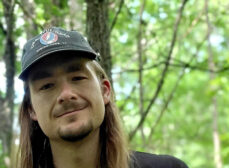
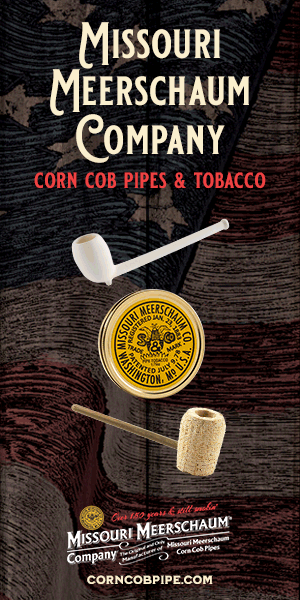


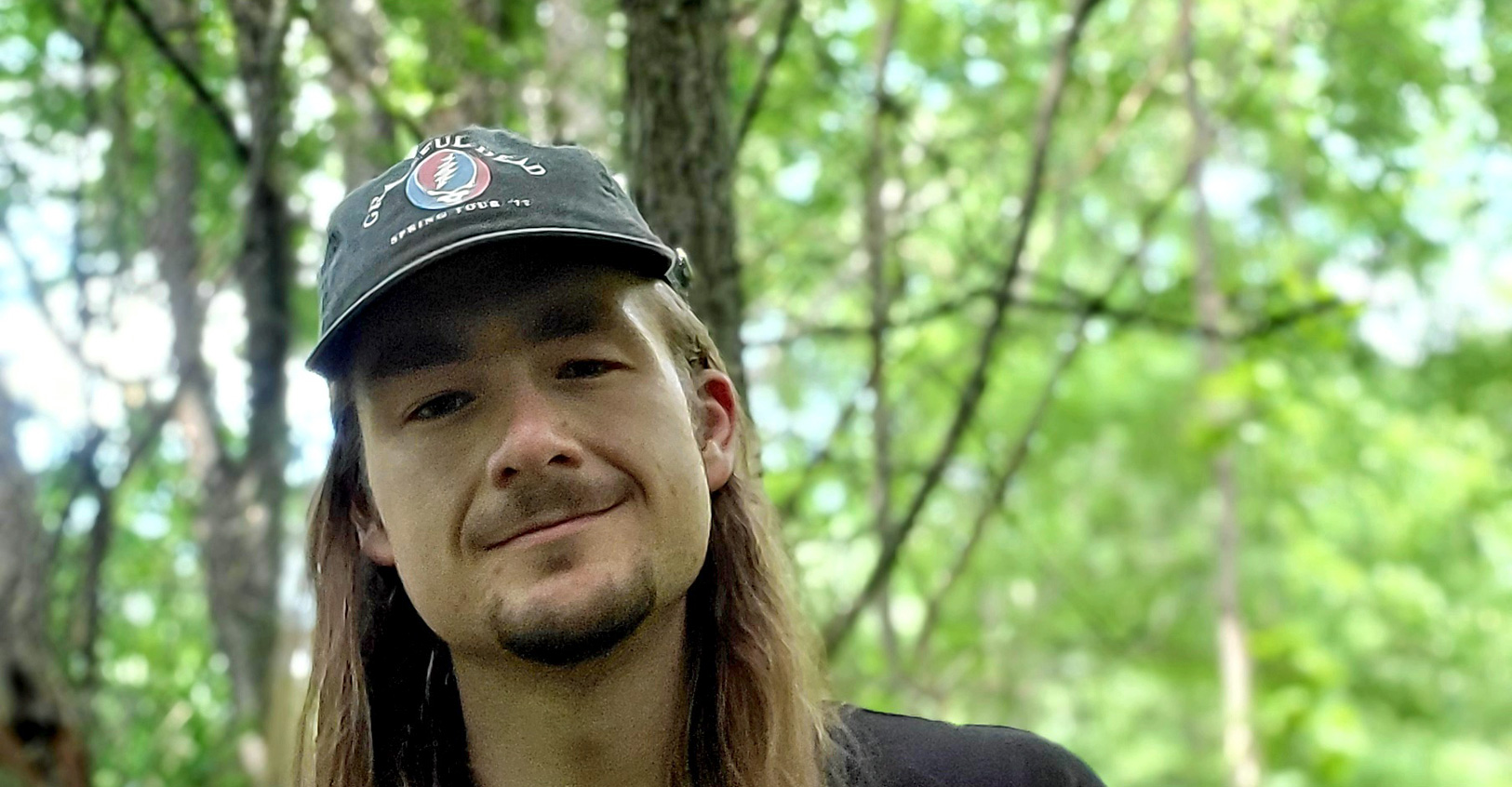

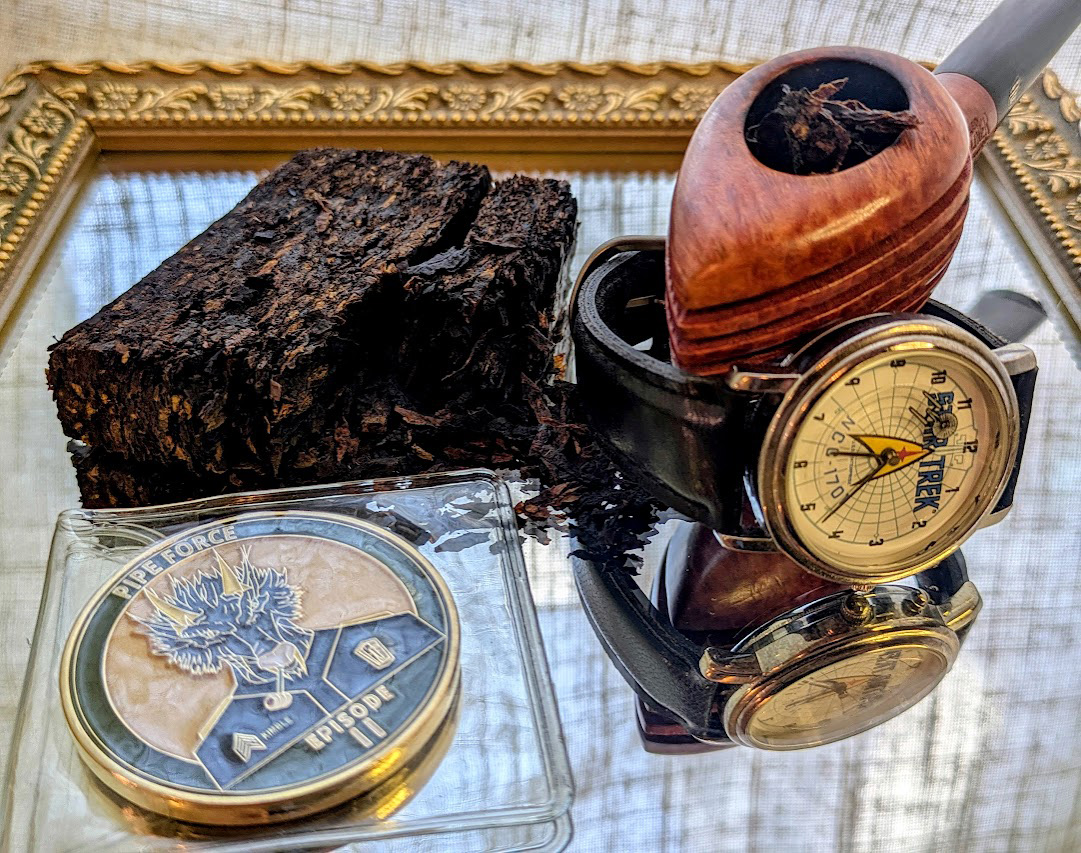
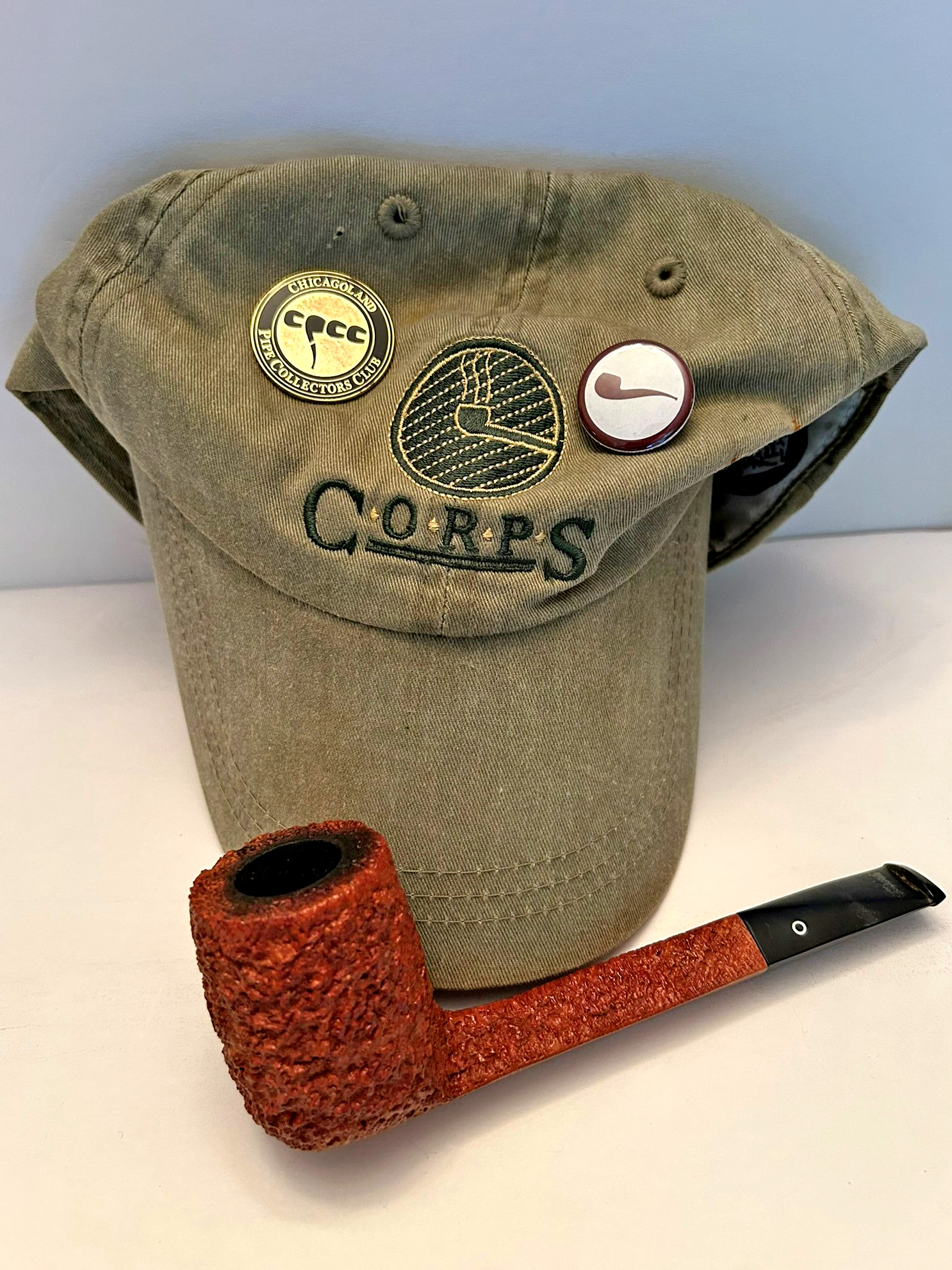




Hi Brian,
Kids! Boy friends, Girl friends- Get the shotgun ready!
Dating Dunhill pipes, dating any pipe is important to appreciate the history of the pipe. Now, to find a 1949 birth-year Dunhill.
I have heard of Jonathan Levezzo and moonshine pipes from facebook, but have not seen his work, except through photographs. I like his approach of making a nice pipe at a decent price. The pipes on his website look very nice. The bulldog shape has always been one of the harder pipes to make. Your interview brings back memories of my Dad who made beer and wine. I remember one jug of Tomato wine he made that tasted like Harvey’s Bristol Cream sherry. I like Johnathan’s attitude and he will be a pipe maker to keep an eye on.
White Christmas, heck, according to the weather map, you may have a white Thanksgiving. Bing is always good for a music selection.
OMG, a RAVE – Brian, I am thankful we have people (you and Kevin) in our hobby that enjoys hosting the pipe podcast and bring us a plethora of great information. Happy Thanksgiving.
Great show, keep up the good work!
I haven’t been here much lately, but still haven’t missed a show!
I too will be investigating a birth year Dunhill in the near future. Hopefully I will be able to bring it on the cruise! Pipedia.org and Pipephil.eu are two of my favorite websites. I am always using those for reference.
I really enjoyed the interview with Jonathan. I think that it is cool that he is making a super affordable handmade pipe. This guys gets what it is all about. I am nonplussed about using molded stems. Hell, even GBD had pipes with molded stems. Pre-transition pipes to boot!
I loved the music choice. Always been a Bing fan. The only other pipe that has a shaped named after a person (at least that I know of) is the Oom Paul otherwise known as the Hungarian.
I am thankful for this podcast. It may seem cheesy or corny, but I can’t tell you how much I enjoy it. I look forward to it every week. Thanks, gents. I hope your Thanksgiving was great!
I haven’t been here much lately, but I haven’t missed a show!
I am glad you mentioned Pipepedia.org and Pipephil.eu. I always use those sites for reference. There is so much information there. I too will be looking for a birth year Dunhill. Hopefully I will be able to bring it on the cruise.
I enjoyed Jonathan’s interview. I think it is awesome that he is making handmade pipes for under $100. This is a guy that really gets it. I wish him all the luck in the world in what he is doing. As for the molded stems, even GBD made pre-transition pipes with molded stems.
I loved the Bing selection “Count You Blessings”. I have always been a Bing fan. The Oom Paul is the only other pipe that I know of that was named for a person.
I am thankful for the whole pipe smoking community! I am especially thankful for this podcast. It is one of the highlights of my week. Not only do you do a great job, you are doing a great service. Thank you.
I hope your Thanksgiving was a great one!
Brian, great show yet again. That was a concise summary of Dunhill date codes. I have a birth year Dunnie but am lucky that I’m an England 26 (some homework for those of you who don’t know the date codes 😉 and they’re not that expensive as the patent years! I’ve seen Mr. Lavezzo’s pipe and it’s good to see people have an affordable artisan option outside of factory pipes. You may or may not remember “The Dagners” on youtube from your Joe Case interview but I believe they are a catalyst of the poker shape. They have quite a following of the younger pipe community members. The son, Jayson Dagner, is a big fan of pokers and pretty much launched Joe Case’s career and popularized the Jake Hackert poker. The Dagner Slayer is one of Joe’s popular shapes. And…it’s a poker 😉 Also, for new carvers, I would say it’s comparatively easier to carve (considering the work it takes to get a billiard or bulldog done right). Loved listening to Bing serenade us this week. They don’t make music like they used to. Have a Happy Turkey day. Your friend in Japan, Andrew. P.S. You need to try GQ BurPer Kake!
Great show Brian. “He hates these cans” is a reference to the only good Steve Martin movie, “The Jerk”.
Really good discussion of Dunhill Dating. I wish there was a chance in hell of me remembering it.
Very pleasant interview. I had never heard of Jonathan Levezzo. I did go to his site to look at his pipes and was disappointed to see he had none for sale and wasn’t likely to anytime soon. Obviously business is good. Don’t see how he can really support himself with pipes selling from $75 – $150. You would have to make and sell 2 pipes a day just to get by.
The Lovat might be considered a shape named after a person.
You can never go wrong with Der Bingle as a musical guest. Kudos for passing on the tired “White Christmas” and going with the wonderful “Count Your Blessings”.
You can never go wrong taking a little time and counting your blessings.
Oh, and the Ramses is another named after a person pipe.
I have been listening to the show for about a year now. Look forward to it every week. One of the best interviews of a down to earth pipe maker in my estimation. Thanks. Looking forward to adding one of his pipes to my collection.
Good to hear of another up and coming pipe maker. Who says the U.S. never makes anything anymore.
Bing Crosby is my favorite crooner. “Counting Your Blessings” is a wonderful segway song for this time of year.
You have given me a couple of missions now. Finding a birth year Dunhill, and looking into a Moonshine Pipe. I like Johnathan’s business model to keep prices down and getting new people excited about pipe smoking.
Hope that more people with these skills get involved in making pipes. But you are right there are very few blenders. Not too long ago there were tobacconist in all the larger towns now you may have to travel quite a ways to get to a true tobacco shop.
Great show,
Brian